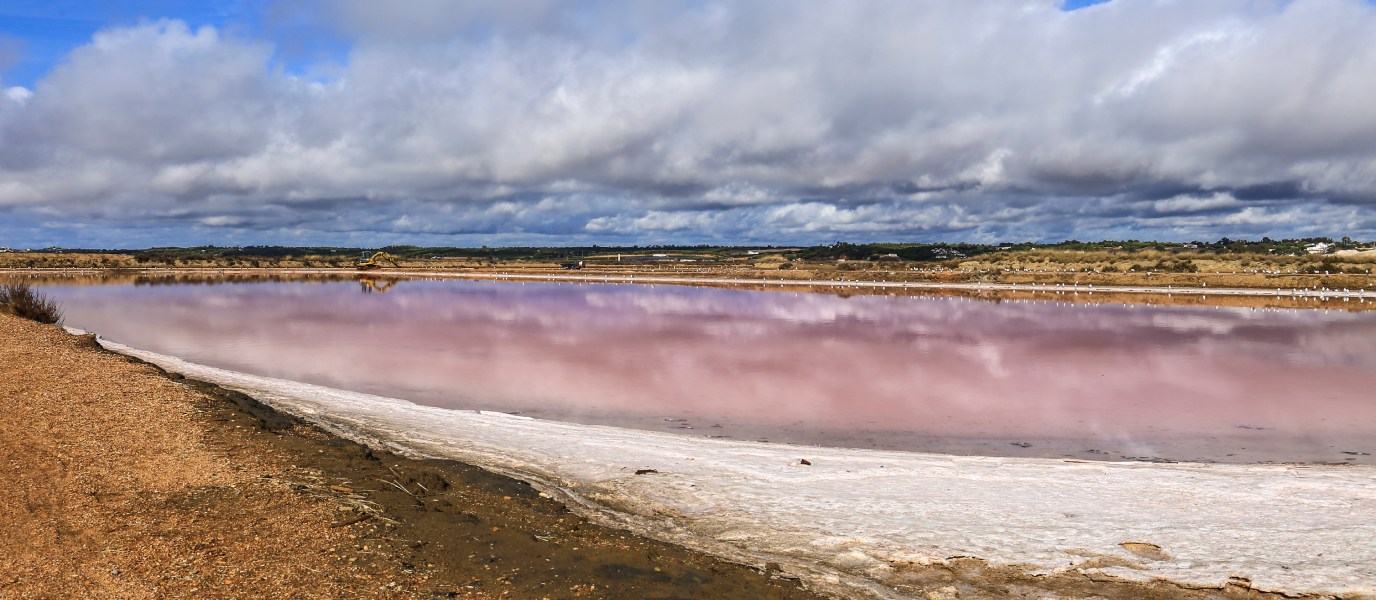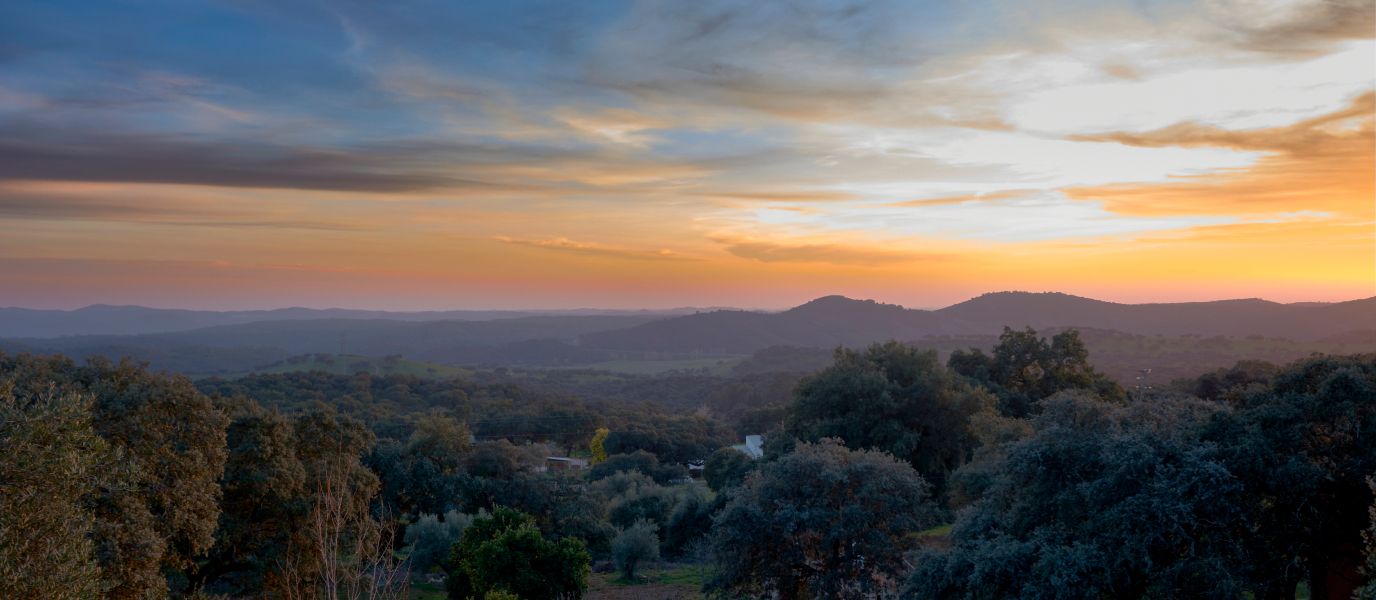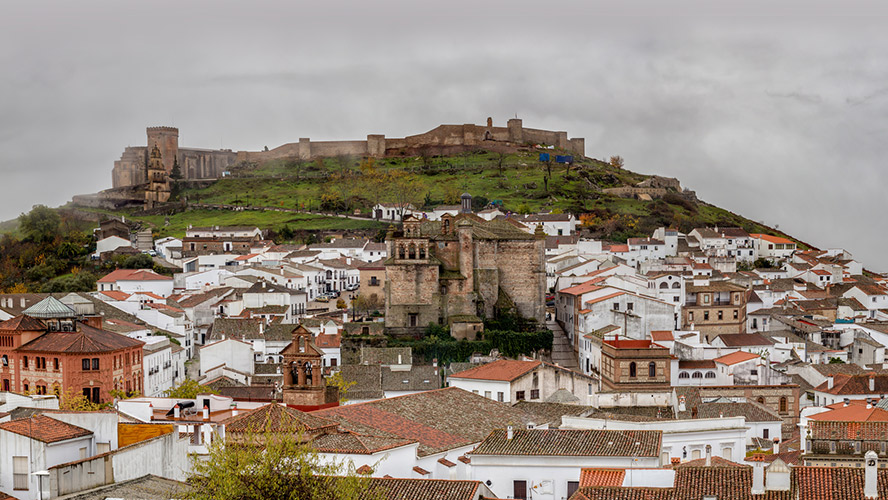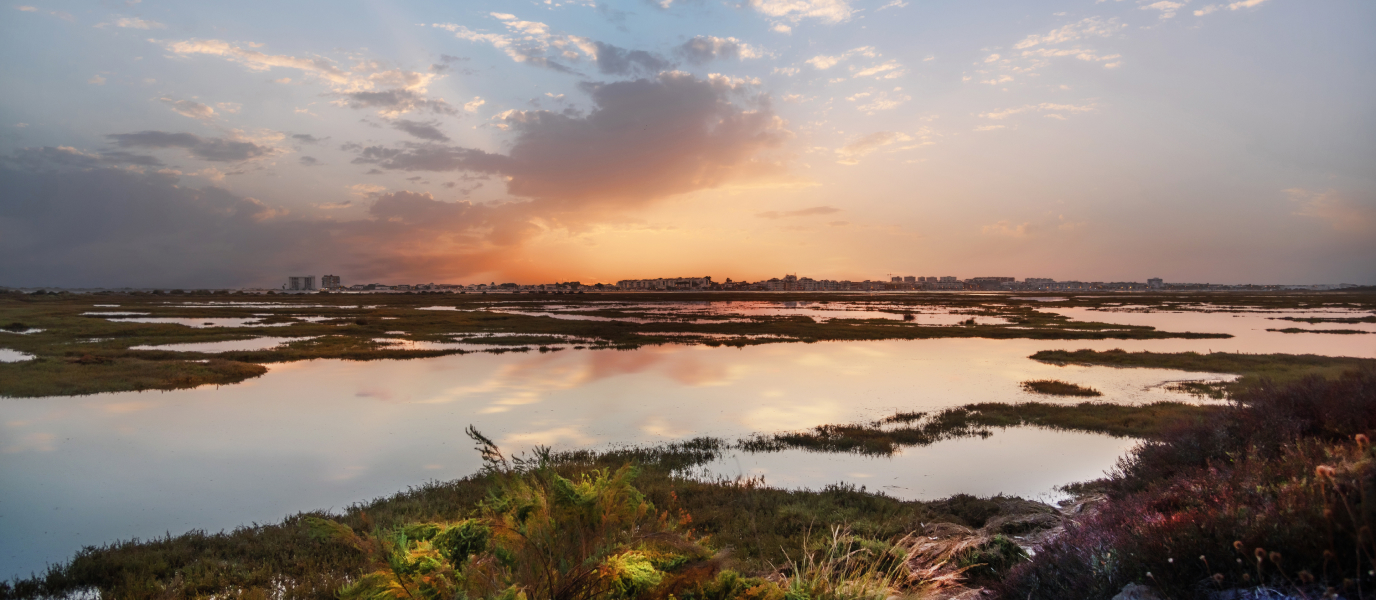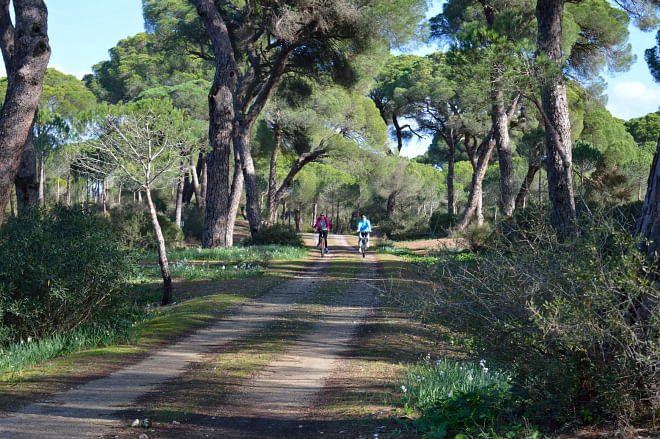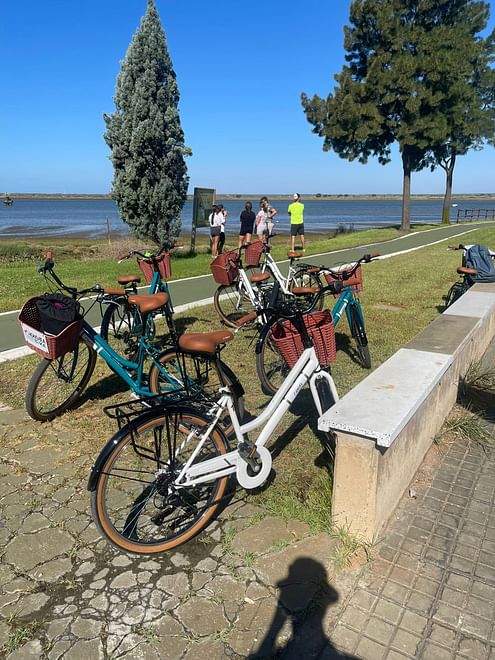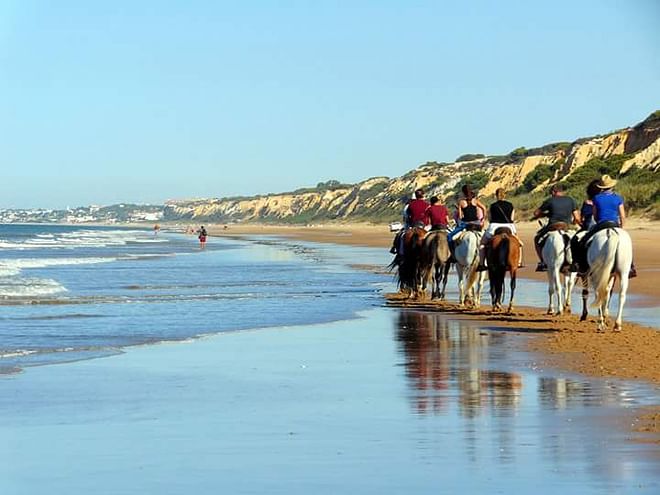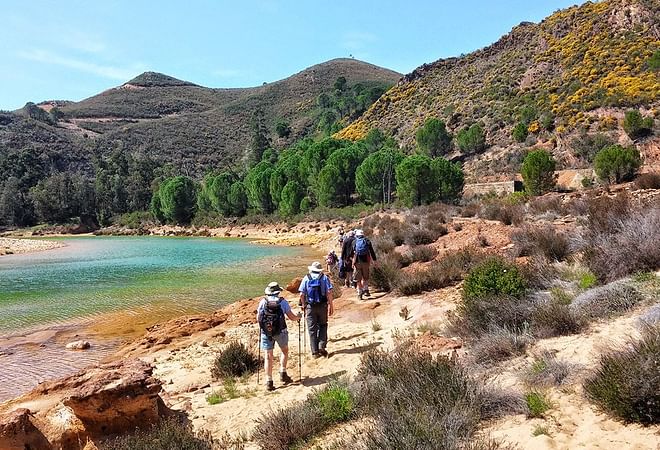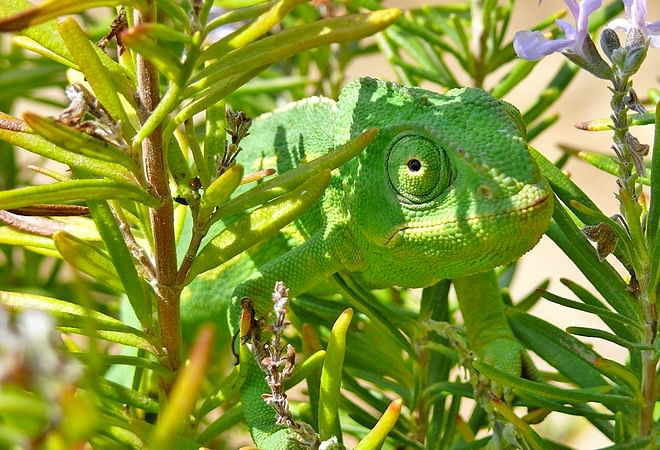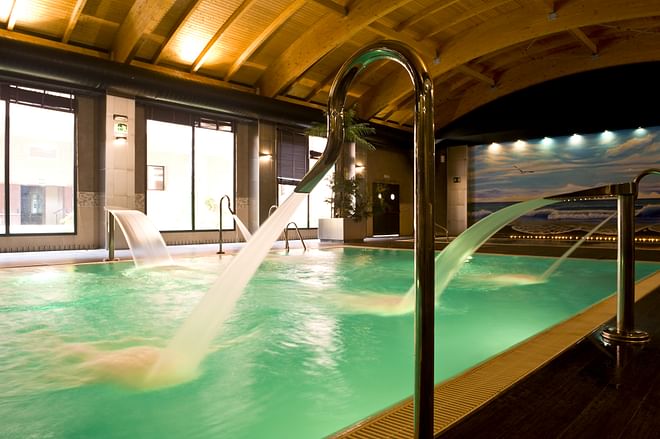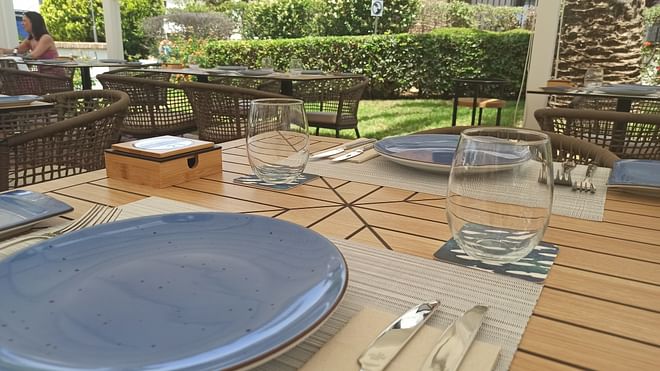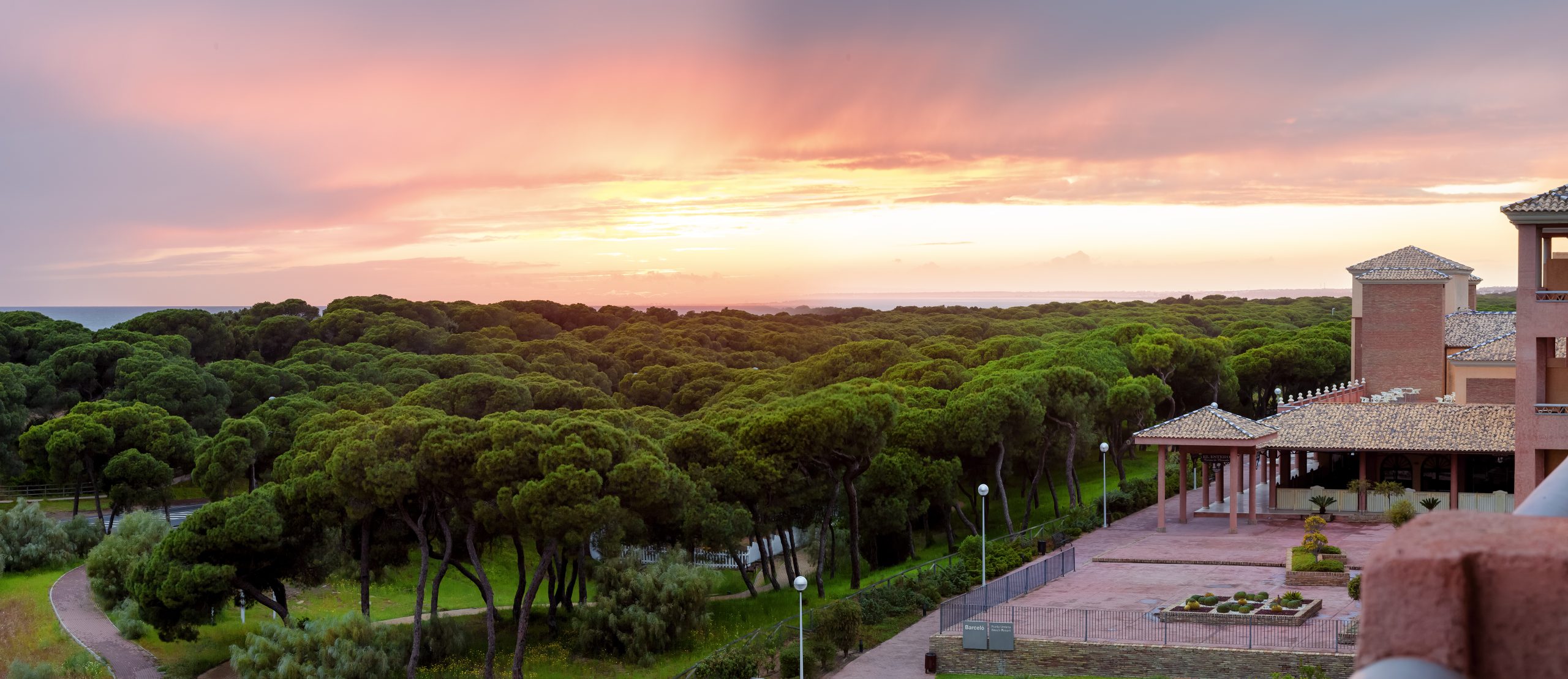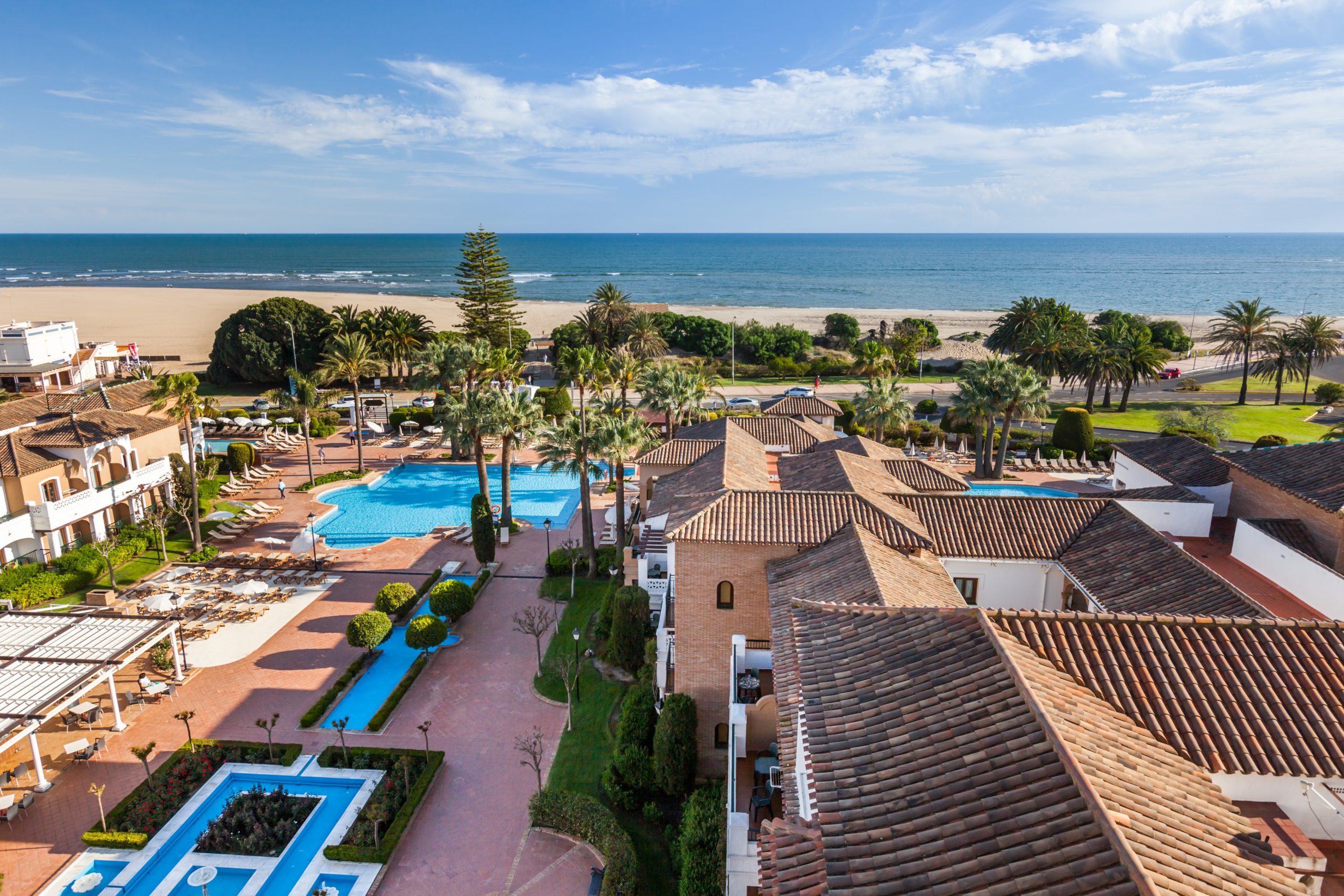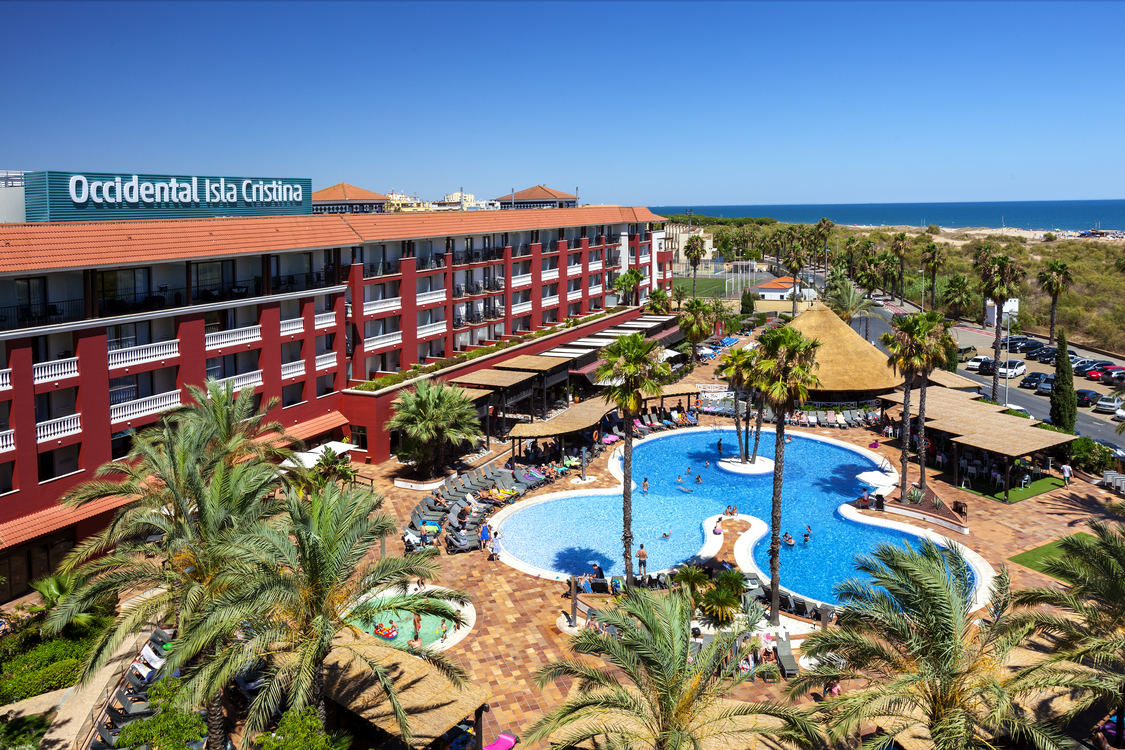This spectacular example of ornithological diversity is without equal in all of Andalusia. The Isla Cristina Marshlands occupy more than two thousand hectares between the municipalities of Ayamonte and Isla Cristina, and they are paradise for birdwatchers and lovers of nature and hiking.
The natural splendour of Isla Cristina Marshlands
Two natural factors have contributed to the emergence of the Isla Cristina Marshlands over the years. The first is the deposit of sediments by the Rivers Guadiana and Carreras, a slow but constant accumulation process. The second is the force of the Atlantic tides, which have given the whole region the shape it has today.
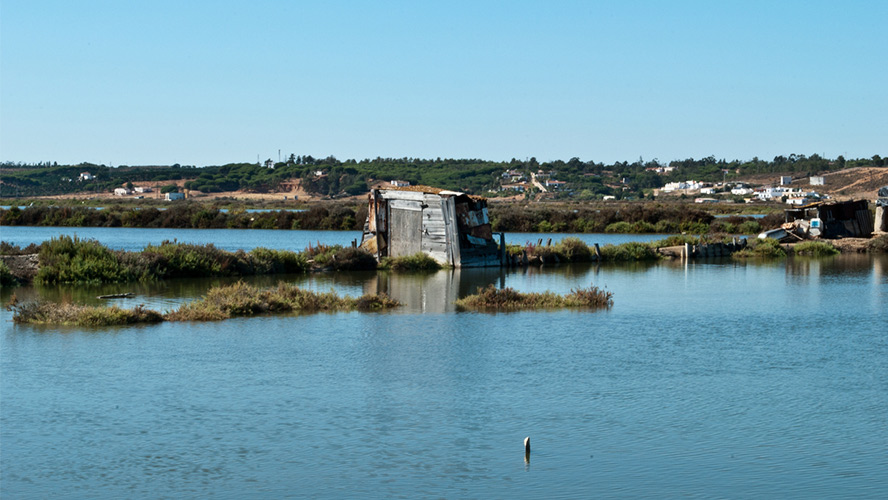
Of course, human action has also shaped the area as there have been many projects of aquaculture over the years that have produced many separate ponds and pools. However, these human endeavours still contribute to a homogenous marshland, with its typical tunnels, branches of water and even estuaries that contain water with a high concentration of salt. In the past, salt flats were created to make the most of this natural resource.
The natural value of protected area is truly incalculable. The Isla Cristina Marshlands play an important part of many water birds’ nesting habits, which makes it a beloved place for birdwatchers.
What to see in the Isla Cristina Marshlands
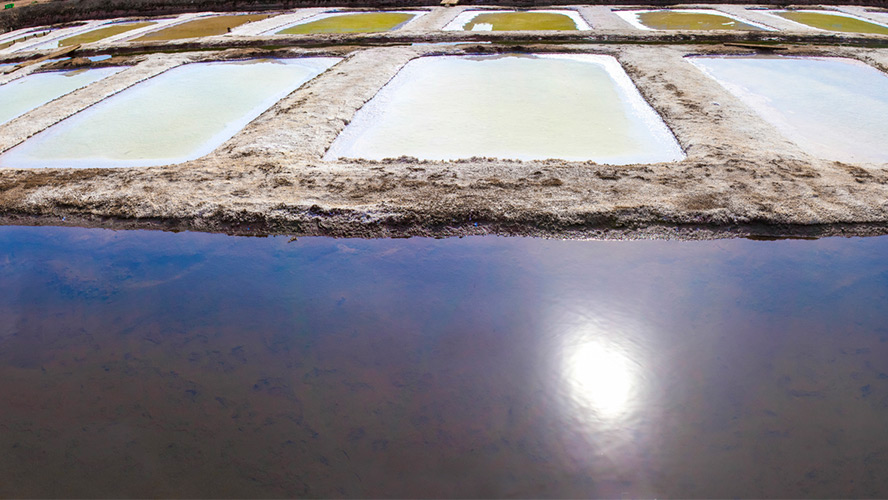
Choose to explore the network of paths in the Isla Cristina Marshlands by bicycle, on foot or on horseback, and stop off at the main observation points in the to enjoy the breathtaking scenery and birdlife. The most popular wildlife trails are:
-
The Coastal Green Road:
This is the main path through the marshland, which follows the old railroad that once connected Huelva with Ayamonte but which was closed in 1987. Because it is an old railroad it is extremely flat, making it ideal for walking or cycling.
-
Laguna del Prado:
This route starts at La Redondela district to the east of the marshland and follows a freshwater lake formed after the construction of a platform for old railway line. It ends at the old train station. Spectacular views flank the route all the way along.
-
Molino Mareal de Pozo del Camino:
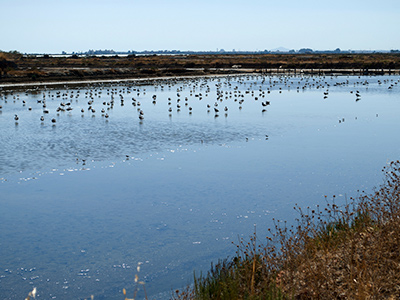
This short walk is only around a kilometre long but offers views of one of the last traditional salt flats that are still in operation in Andalusia. The route begins in the Pozo del Camino district and ends at the Rail Trail.
-
Salinas del Duque:
Starting in the Punta del Moral district, this 7-kilometre circular path follows the edge of the Punta de la Cruz marsh and has a great observation point for birdwatching.
Aside from the walking routes, another interesting place to visit is the Isla Cristina Marshland Ecomuseum (Ecomuseo de las Marismas de Isla Cristina), where the Molino Mareal de Pozo del Camino path starts. It is located in a renovated 18th century tidal mill and offers visitors the chance to learn more about the flora and fauna of the marshland and also how humans have exploited it over the years.
Flora and fauna of the Isla Cristina Marshlands
Birds are, without doubt, the queens of the marshlands. Along the coast of Huelva there are many of these marshlands, such as those of Los Ríos Odiel and Piedras, la Flecha del Rompido and El Portil lagoon.
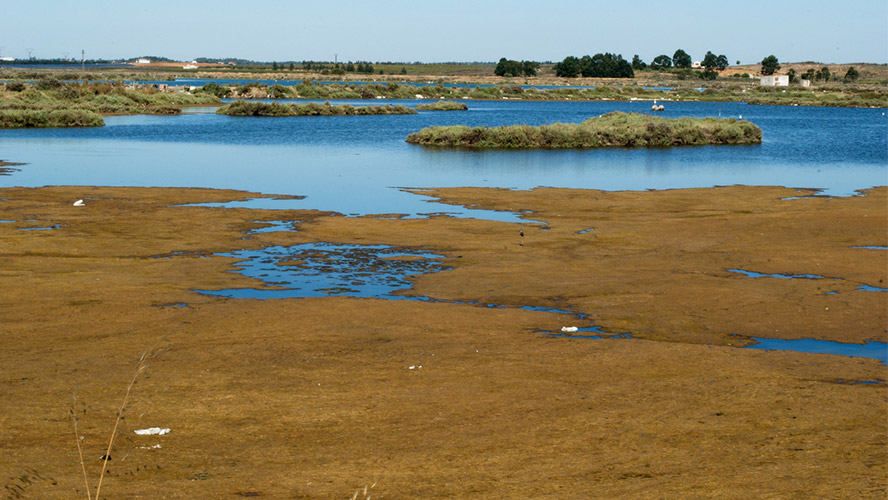
There are some species of birds that make Isla Cristina their home all year round, such as avocets, with their elegantly upturned beaks, and Eurasian spoonbills who very much earn their name by the shape of their beaks.
There are also migratory birds that make these marshlands their temporary home every summer and winter. Some of these are the Little Gulls, Eurasian Wigeons, and Red-crested pochards.
There’s more to the marshlands than birds, though. In fact, they are home to a vast array of wildlife including amphibians (salamanders, frogs and toads, to name a few) and many small fish species that make up the majority of the birds’ diet. Be sure to keep an eye out for the otters that are native to the area too.
Due to the high level of salinity very few plants are able to adapt to the environment. Much of the flora is made up of bushes although there are pine trees, rosemary and a species of juniper that is unique to the provinces of Huelva and Cadiz.



























































